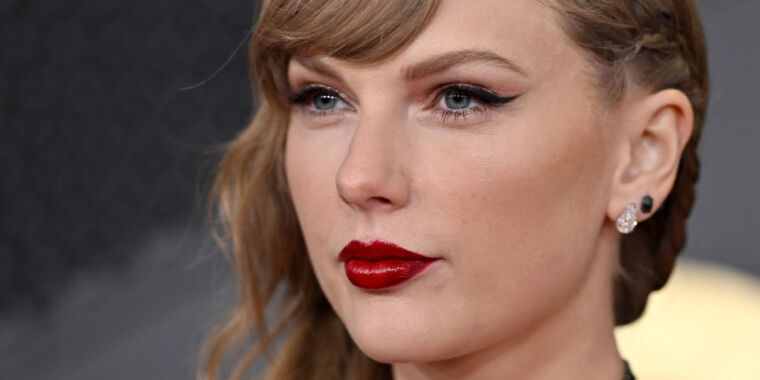4chan daily challenge sparked deluge of explicit AI Taylor Swift images


4chan users who have made a game out of exploiting popular AI image generators appear to be at least partly responsible for the flood of fake images sexualizing Taylor Swift that went viral last month.
Graphika researchers—who study how communities are manipulated online—traced the fake Swift images to a 4chan message board that’s “increasingly” dedicated to posting “offensive” AI-generated content, The New York Times reported. Fans of the message board take part in daily challenges, Graphika reported, sharing tips to bypass AI image generator filters and showing no signs of stopping their game any time soon.
“Some 4chan users expressed a stated goal of trying to defeat mainstream AI image generators’ safeguards rather than creating realistic sexual content with alternative open-source image generators,” Graphika reported. “They also shared multiple behavioral techniques to create image prompts, attempt to avoid bans, and successfully create sexually explicit celebrity images.”
Ars reviewed a thread flagged by Graphika where users were specifically challenged to use Microsoft tools like Bing Image Creator and Microsoft Designer, as well as OpenAI’s DALL-E.
“Good luck,” the original poster wrote, while encouraging other users to “be creative.”
OpenAI has denied that any of the Swift images were created using DALL-E, while Microsoft has continued to claim that it’s investigating whether any of its AI tools were used.
Cristina López G., a senior analyst at Graphika, noted that Swift is not the only celebrity targeted in the 4chan thread.
“While viral pornographic pictures of Taylor Swift have brought mainstream attention to the issue of AI-generated non-consensual intimate images, she is far from the only victim,” López G. said. “In the 4chan community where these images originated, she isn’t even the most frequently targeted public figure. This shows that anyone can be targeted in this way, from global celebrities to school children.”
Originally, 404 Media reported that the harmful Swift images appeared to originate from 4chan and Telegram channels before spreading on X (formerly Twitter) and other social media. Attempting to stop the spread, X took the drastic step of blocking all searches for “Taylor Swift” for two days.
But López G. said that Graphika’s findings suggest that platforms will continue to risk being inundated with offensive content so long as 4chan users are determined to continue challenging each other to subvert image generator filters. Rather than expecting platforms to chase down the harmful content, López G. recommended that AI companies should get ahead of the problem, taking responsibility for outputs by paying attention to evolving tactics of toxic online communities reporting precisely how they’re getting around safeguards.
“These images originated from a community of people motivated by the ‘challenge’ of circumventing the safeguards of generative AI products, and new restrictions are seen as just another obstacle to ‘defeat,’” López G. said. “It’s important to understand the gamified nature of this malicious activity in order to prevent further abuse at the source.”
Experts told The Times that 4chan users were likely motivated to participate in these challenges for bragging rights and to “feel connected to a wider community.”
Source link




